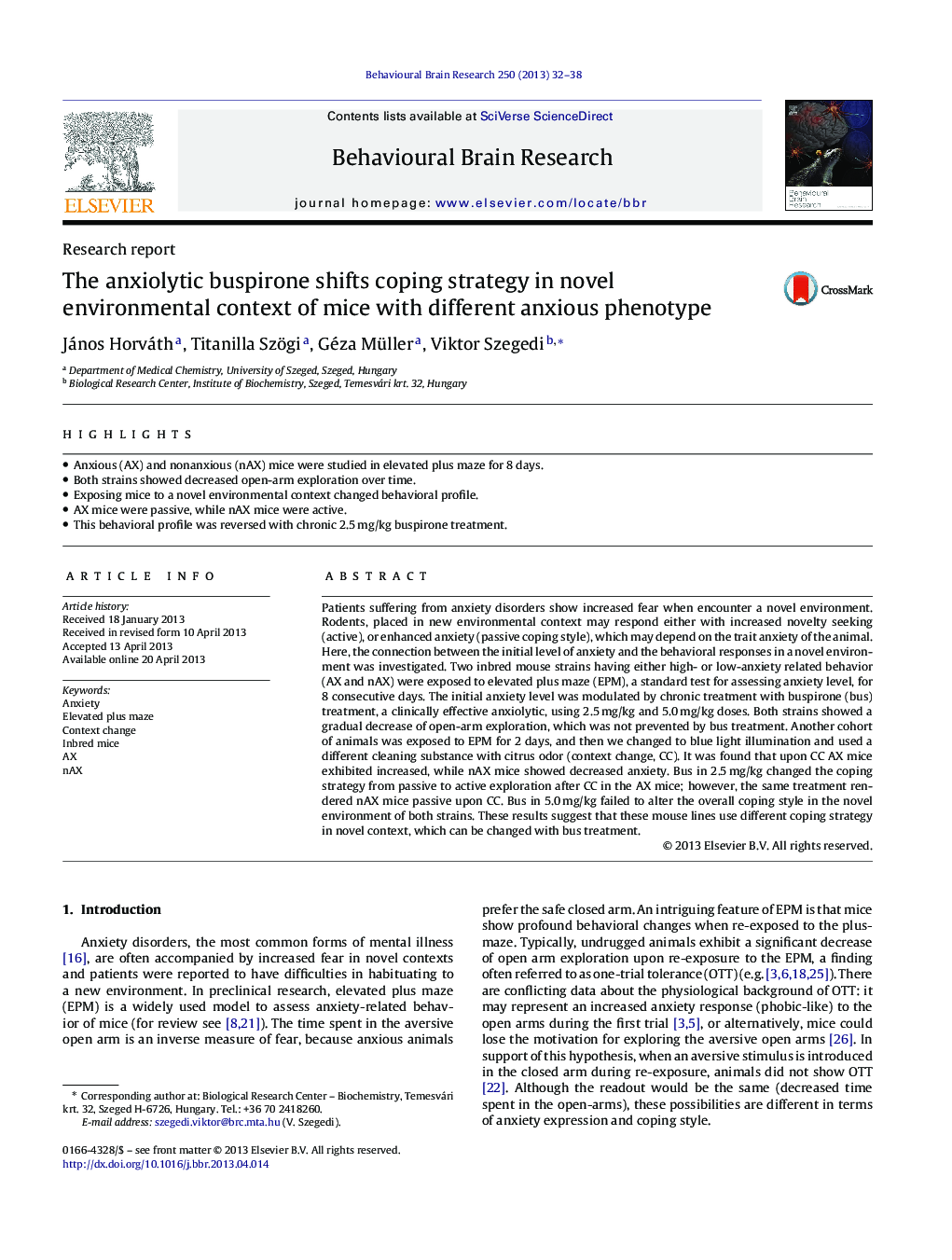| کد مقاله | کد نشریه | سال انتشار | مقاله انگلیسی | نسخه تمام متن |
|---|---|---|---|---|
| 6258962 | 1612982 | 2013 | 7 صفحه PDF | دانلود رایگان |

- Anxious (AX) and nonanxious (nAX) mice were studied in elevated plus maze for 8 days.
- Both strains showed decreased open-arm exploration over time.
- Exposing mice to a novel environmental context changed behavioral profile.
- AX mice were passive, while nAX mice were active.
- This behavioral profile was reversed with chronic 2.5Â mg/kg buspirone treatment.
Patients suffering from anxiety disorders show increased fear when encounter a novel environment. Rodents, placed in new environmental context may respond either with increased novelty seeking (active), or enhanced anxiety (passive coping style), which may depend on the trait anxiety of the animal. Here, the connection between the initial level of anxiety and the behavioral responses in a novel environment was investigated. Two inbred mouse strains having either high- or low-anxiety related behavior (AX and nAX) were exposed to elevated plus maze (EPM), a standard test for assessing anxiety level, for 8 consecutive days. The initial anxiety level was modulated by chronic treatment with buspirone (bus) treatment, a clinically effective anxiolytic, using 2.5Â mg/kg and 5.0Â mg/kg doses. Both strains showed a gradual decrease of open-arm exploration, which was not prevented by bus treatment. Another cohort of animals was exposed to EPM for 2 days, and then we changed to blue light illumination and used a different cleaning substance with citrus odor (context change, CC). It was found that upon CC AX mice exhibited increased, while nAX mice showed decreased anxiety. Bus in 2.5Â mg/kg changed the coping strategy from passive to active exploration after CC in the AX mice; however, the same treatment rendered nAX mice passive upon CC. Bus in 5.0Â mg/kg failed to alter the overall coping style in the novel environment of both strains. These results suggest that these mouse lines use different coping strategy in novel context, which can be changed with bus treatment.
Journal: Behavioural Brain Research - Volume 250, 1 August 2013, Pages 32-38